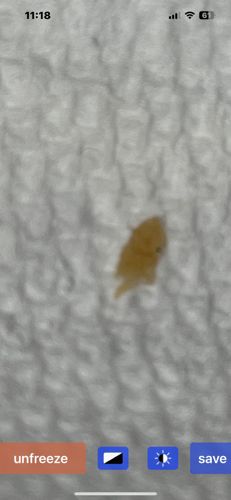Louse
Scientific Name: Phthiraptera (Order)
Order & Family: Phthiraptera (Order), various families including Pediculidae and Pthiridae
Size: Generally 0.5 mm to 8 mm, with human lice typically 1-4 mm long.

Natural Habitat
As ectoparasites, lice live on the feathers or hair of warm-blooded hosts, including humans, mammals, and birds. Human lice specifically inhabit human hair, clothing, or pubic regions.
Diet & Feeding
Lice are obligate parasites. Sucking lice (suborder Anoplura), which include human lice, feed exclusively on blood. Chewing lice (suborder Mallophaga) feed on skin, feathers, and sebaceous secretions.
Behavior Patterns
Lice spend their entire lives on a single host. They reproduce rapidly, laying eggs (nits) that are cemented to hair or feathers. They are generally slow-moving but can transfer between hosts through close contact. They prefer warm, dark, and humid environments on their host.
Risks & Benefits
Risks: Lice infestations (pediculosis) can cause intense itching, skin irritation, and secondary bacterial infections from scratching. Human lice are generally not vectors for serious diseases, but some species can transmit pathogens (e.g., body lice transmitting trench fever, relapsing fever, epidemic typhus). Benefits: None for humans; in ecological terms, they are a food source for some predatory insects and birds, and play a role in host-parasite dynamics.
Identified on: 9/22/2025